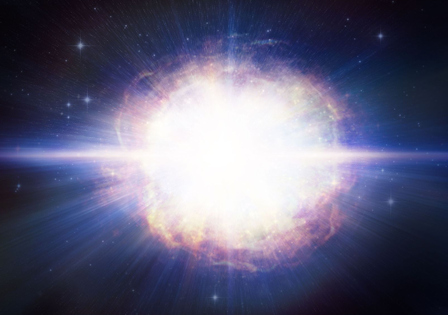GCSE level questions on the Earth in Space Q10.The lifecycle of some stars includes a supernova stage.
(a)
[1 mark]
[1 mark]
[1 mark]
(b) Describe what happens to a star like the Sun as it passes through its lifecycle. Your answer should include how the star was formed and the names of the stages the star passes through.
- the examiner looks for relevant points - but also for a logical sequence... It is not just a 'tick fest' - but a marker does look to see how many relevant points you have made, then considers how you have strung them together to put your answer into a 'level'
Examples of physics points that should be made in the response:
[6 marks] (c) There are a number of theories about how the Universe will end. A recent theory suggests that 22 billion years from now the Universe will rip itself apart. Suggest why scientists may support one particular theory and reject others. Scientists tend to support a theory if there is evidence/data known that can only be explained by that one theory, or that has been predicted by one particular theory. Theories supported/provided by famous/respected scientists tend to be respected until proved false. Those from unknown sources are looked at with more suspicion. [2 marks] (Total 11 marks) |
Follow me...
|






